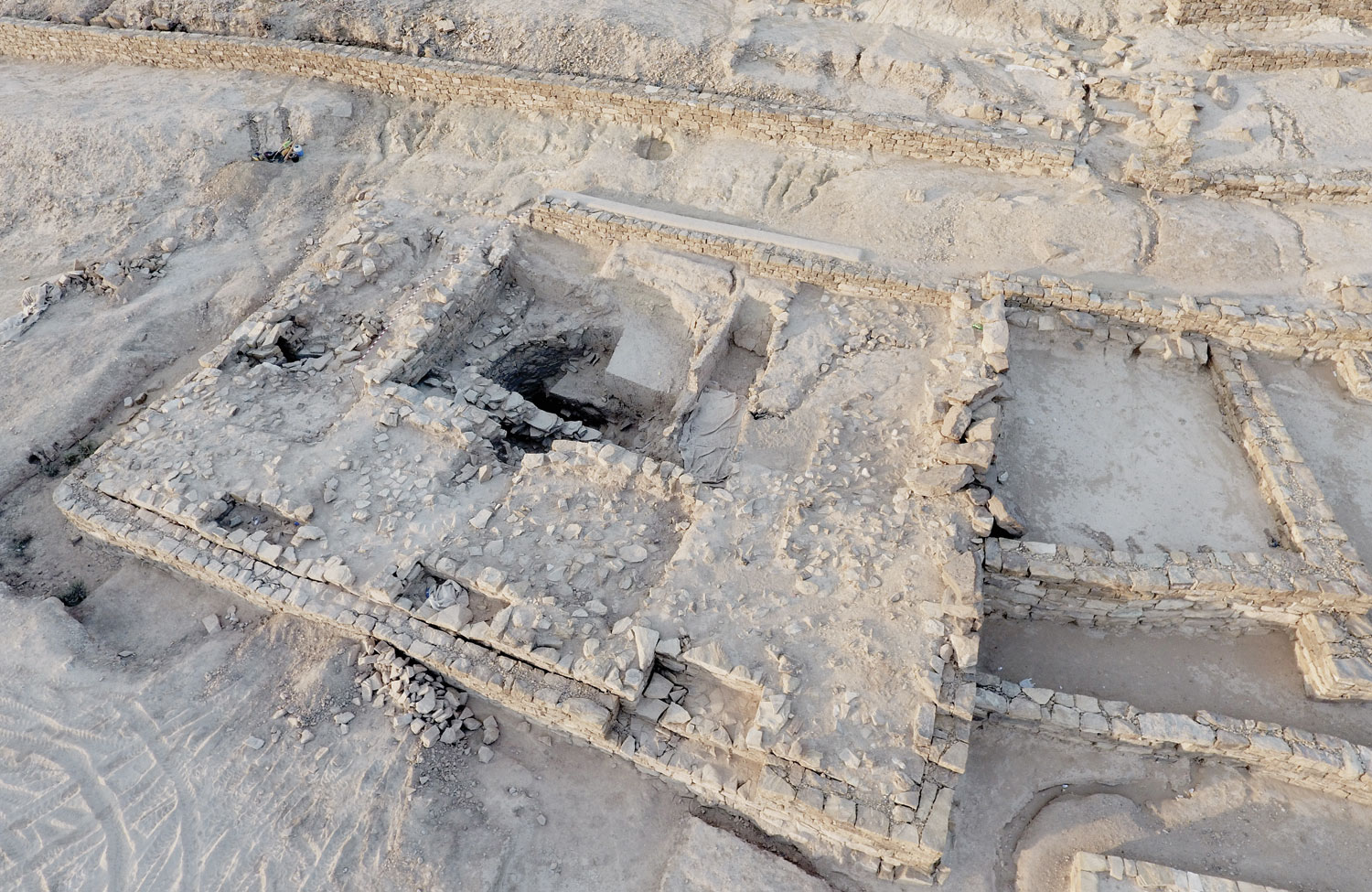

MUSCAT, March 6 - A number of Bronze Age graves on the hills adjacent to Salut City in Bahla were recently excavated, witnessing a great variability in their structure. Some of them have already been restored, according to the findings by the excavation team. Addressing a press conference at the Office of the adviser to His Majesty the Sultan for Cultural Affairs, Dr Said bin Nasser al Salmi, Director-General of the office, said that the office is currently working on the development of this site to be a fully-fledged archaeological park to turn it into a tourist attraction for Omani and foreign visitors.
He added that work has started on planting 300-date palms of different Omani types on a traditional farm and there is a study to showcase the discoveries at the park. “All the finding will be exhibited at the site for people to see the history of this ancient city,” Dr Al Salmi said. Speaking on the occasion, Prof Alessandra Avanzini, head of the Italian mission of Pisa University in the Sultanate, said that the recent archaeological excavations indicated that Salut site is larger than previously thought. She added that evidence found confirmed the originality of Salut as the heart of Majan Civilization in historic Oman.

Prof Avanzini also emphasised the existence of cultural communication between Salut and the civilisations of the old world in the third millennium BC, where evidence of cultural interaction with ancient civilisations, such as the Indus Valley Civilisation and Mesopotamia Civilisation was found. he said that after the discovery of the massive rock wall dating back to the Iron Age, which was part of a large settlement — the ancient city of Salut — by the end of the year 2015, and because of the excavation works, the features of the city became more visible.
She added that a number of buildings have been found, including ones with more than two rooms separated by narrow streets, and rocky terraces were built around the entire plateau. She said that these are the most important discoveries made during the recent excavations. The expert highlighted the existence of several elements such as, the extensive planning of the settlement, the regularity of the buildings, the internal network of corridors and streets, the rainwater drainage system, the existence of the fortified areas and the potential existence of specialised buildings. This remarkable system of planning shows that Salut was a civilised centre.
Waleed bin Sultan al Muzaini, Director of the Salut Archaeological Park, said: “Every day we discover new things that tell us the history of Salut. What was discovered recently was very exciting as it was thought that the Salut city dates back to the Iron Age, but the recent findings and through the radioactive carbon sample (C14) showed evidence of the ancient history of the Salut city. It dates back to the first half of the second millennium BC — the Middle Bronze Age.” Al Muzaini also said that the new excavations also showed that settlement in Salut did not end in the first century AD, as it was thought, but extended to later eras.
“Over the last three months, the site received more than 700 visitors, which is a record number in such a short period. This reflects Omanis’ love of heritage and history” Al Muzaini added. The excavation team, which consists of the Italian Mission to Oman and a number of Omani archaeologists, discovered the presence of a new necropolis, of which some 30 graves were excavated, all robbed in antiquity. Part of the necropolis was established on top of buried older structures. Some graves contain luxurious materials, such as bronze drinking sets of which the most astonishing element is a bowl to which a shaped spout was applied. Three horse-protome spouts were so far discovered, plus another one with a hybrid human or animal representation.
In addition to other finds like jars, pilgrim flasks, there is an abundance of iron arrowheads, daggers and swords. This indicates that the graves belong to soldiers of an old battle in Salut. The grave-goods from this new necropolis also reflect the renewed inclusion of Salut in a far-reaching trade network, as objects from Mesopotamia, Persia, Yemen and the Roman Empire are witnessed. The Salut excavation programme began in 2004 under the supervision of the Office of the Adviser to His Majesty the Sultan for Cultural Affairs with cooperation with the Italian Mission from University of Pisa.
Oman Observer is now on the WhatsApp channel. Click here



